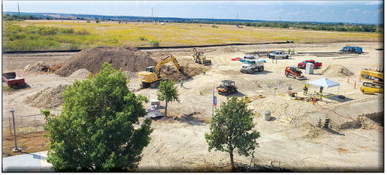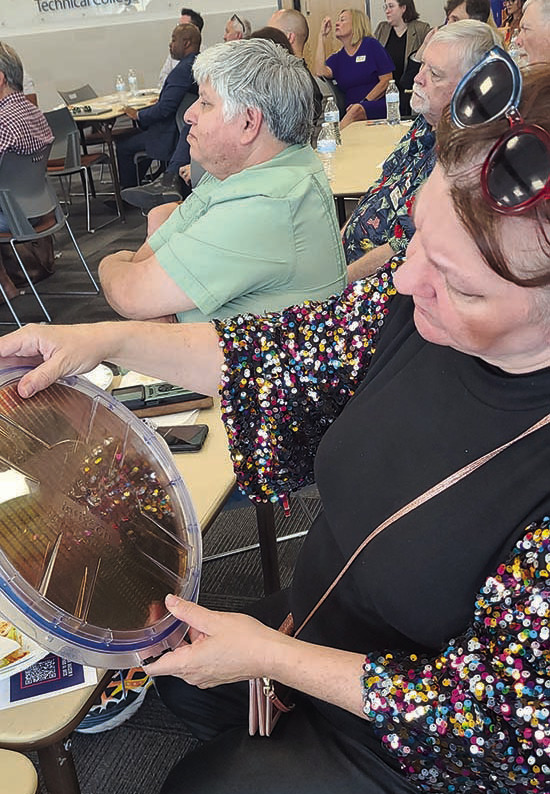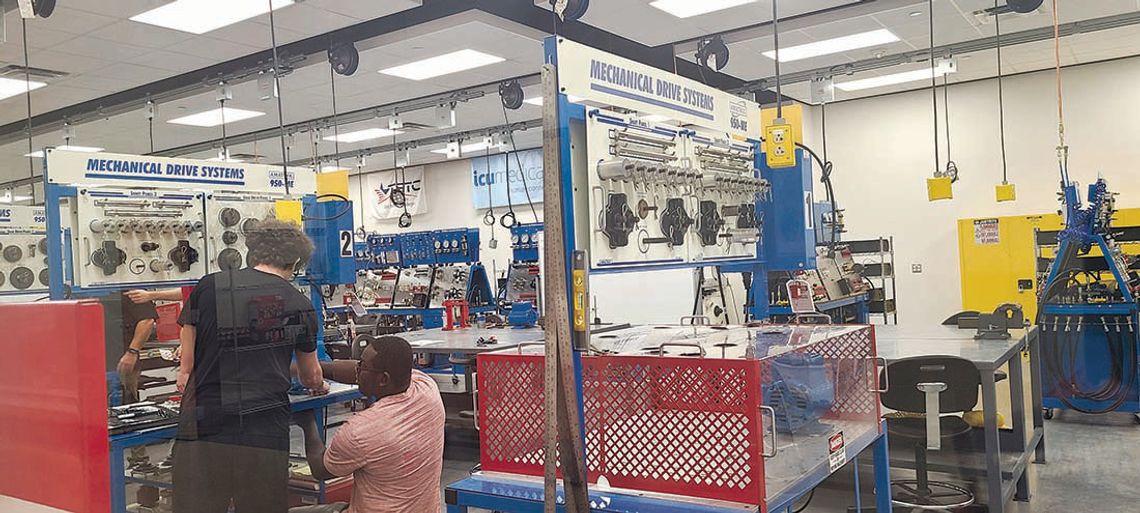Hutto chamber hears progress report from company
HUTTO — Up to 1,000 employees over the next two quarters could start filing into the Samsung Austin Semiconductor campus in Taylor beginning next month.
That was the word from Samsung spokeswoman Michele Glaze during an Oct. 8 luncheon hosted by the Hutto Area Chamber of Commerce.
Officials with parent firm Samsung Electronics Co. Ltd. of South Korean and Gov. Greg Abbott announced in November 2021 the chip foundry, fueled by an initial $17 billion investment, was locating to Taylor. Company officials said it could be operational by the end of 2026.
“We have a strong and aggressive timeline for our fab,” said Glaze, speaking at the East Williamson County Higher Education Center, 1600 Innovation Blvd.


Samsung, which creates microchips found in hundreds of devices, is also entering into strategic partnerships, company officials have said.
Tesla Inc. announced earlier this year it would be the first major client for the fabrication facility, signing a $16.5 billion deal to have Samsung manufacture next-generation chips for the electric-vehicle maker.
According to Glaze, when the first permanent Samsung workers enter the facility, they will discover amenities similar to Samsung’s existing Austin location, including a fitness center, atriums, cafeterias, a meditation space, a lazy river, a water fountain in the shape of Texas and more than 125 trees planted around the office area.
About 1,000 workers are expected during the two-quarter period, though Samsung officials in 2022 predicted the facility would someday employ about 1,800.
Up to 4,500 employees will eventually support the Taylor and Austin campuses.
Glaze told the audience in addition to the six-story office building and the fabrication plant, the Taylor facility has its own utility station, electrical substation, water and wastewater facilities, two chemical supply buildings, three warehouses, two water tanks, 250 construction trailers and other structures needed to support employees, administration and production.
According to the spokeswoman, there will be enough stored water to supply the facility through three days of production in case of a shortage due to severe weather, which is what happened to the Austin facility in 2021 with Winter Storm Uri.
Glaze said more than 40,000 laborers have put in nearly 70 million work hours, pouring more than 3 billion pounds of concrete and moving 32 million cubic feet of dirt.
Prop 1 on the ballot
During the address, Glaze also encouraged the crowd to vote yes for Proposition One Nov. 4.
Early voting is from Oct. 20-31.
Proponents say Prop 1 will help Texas State Technical College increase its ability to train students for jobs in advanced manufacturing, including working for Samsung.
TSTC has expansion projects at seven of its 11 campuses statewide. The Hutto campus will add a 70,635-square-foot building expected to triple student enrollment in manufacturing programs when it opens in 2027.
Kendal Carrillo, vice president and senior advisor to the chancellor, said the school does not have a dedicated funding source for infrastructure and capital projects, so it must ask the Legislature for money every two years.
If approved by voters, Prop 1 would take $850 million the state has already collected and put it in an investment fund controlled by the comptroller. The fund would generate about $50 million a year in interest, which would be allocated specifically to TSTC buildings, equipment and training programs.
The $850 million seed money would come from already collected funds, Carrillo said. Prop 1 will not cost taxpayers any additional money, according to supporters.
“We’re growing our current footprint on the campuses we have. That’s really important because of the amount of business that’s being attracted to Texas and hopefully staying in Texas,” Carrillo said.
More to come
Samsung has development agreements to potentially build up to nine more fabrication factories in Taylor and Austin in 2040, depending on the demand for the chips and the geopolitical factors that affect international businesses, according to Glaze.
The plants would depend on the availability of a steady supply of qualified workers.
The total investment in the project could approach $44 billion over the next few decades, officials have said, including initiatives from the federal government.
“We are excited that the new advanced manufacturing center that’s being built is going to help expand the talent pipeline and keep up with the semiconductor industry growth,” Glaze said.
She said advanced manufacturing depends on highly skilled people running tools and systems.
“Once you build a manufacturing facility, it’s not going to go away because we will continue to put in new tools as industry evolves and technology evolves. That is the beauty of those tools,” she said.
“
“Once you build a manufacturing facility, it’s not going to go away.”
— Michele Glaze, Samsung Austin Semiconductor









